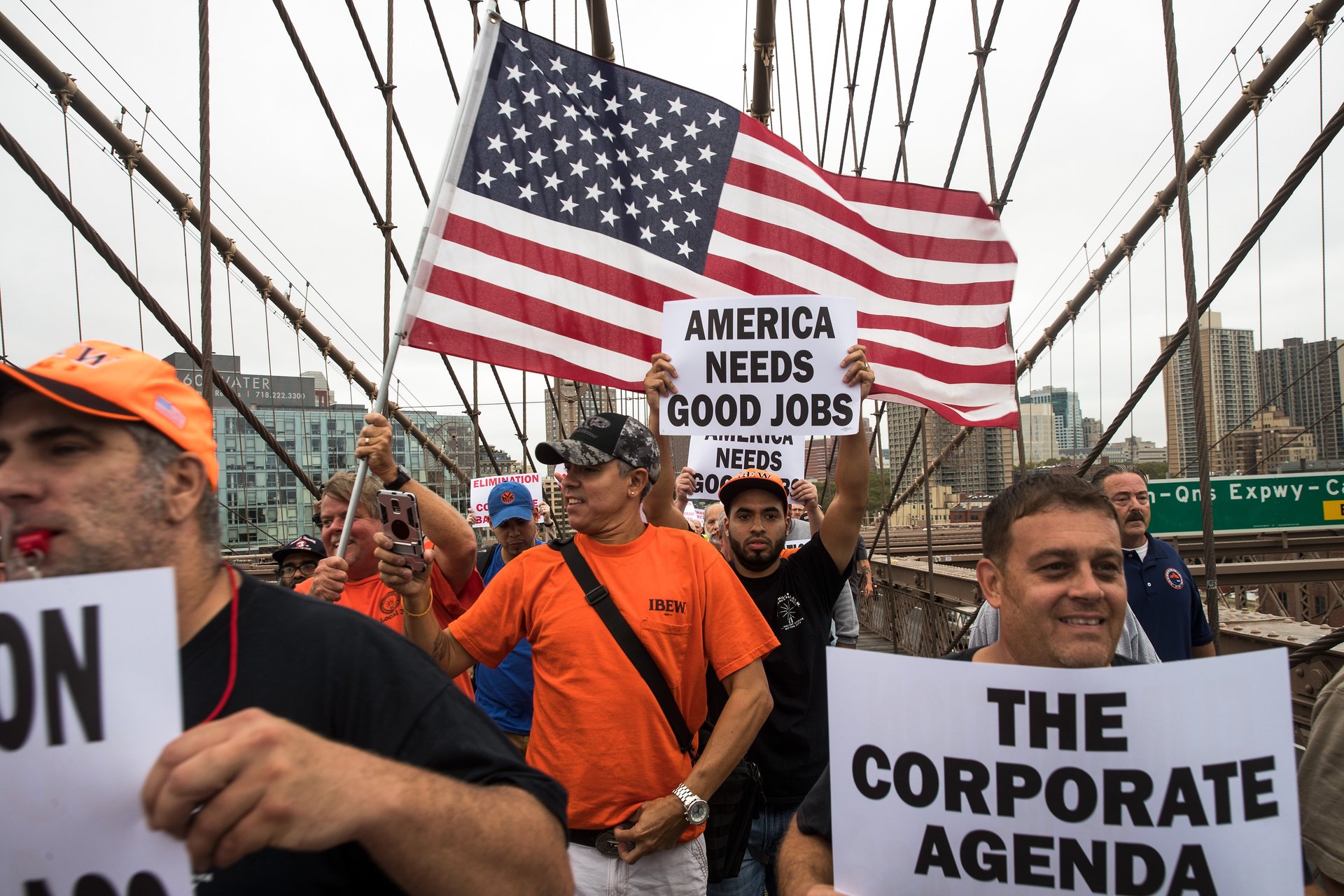US union membership is at its lowest level since the Great Depression
As union membership declines, the share of income going to the top 10% is increasing

When it comes to their employees, employers are getting more for less these days. US wages have stagnated in recent years, and salary increases have not caught up with inflation. Meanwhile, US productivity grew 3.7 times as fast as pay—64.6% compared to 17.3%—between 1979 and 2021.
Suggested Reading
Another trend that spells bad news for employees: The percentage of US workers that are members of unions has sharply declined since the 1970s, according to analysis from researchers at Georgia State, Trinity, and Miami Universities, based on data by the US Bureau of Labor Statistics (BLS).
Related Content
The loss of unions has led to fewer opportunities for workers to demand fair rights. Much has been said about the recent resurgence of unions in the US, but the BLS data show otherwise. In 2022, the union membership rate fell by 0.2 percentage points year-over-year to 10.1%—the lowest since 1934. That amounts to one in ten workers (pdf) currently in a union, compared to one in three during the 1950s.
Meanwhile, the share of US income going to the top 10% has increased steadily since the 1980s. In 2021, 45.6% of US income went to the top 10% of Americans, according to the World Inequality Database. The proportion of wealth going to the top 10% of Americans is approaching 1930s levels, when the top 10% held nearly 50% of US income.
According to the independent nonpartisan policy institute Center for American Progress, unions help increase wealth for all and close racial wealth gaps. The median union household has more than twice the wealth of a median nonunion household, according to analysis by the group based on data from the Survey of Consumer Finances.
